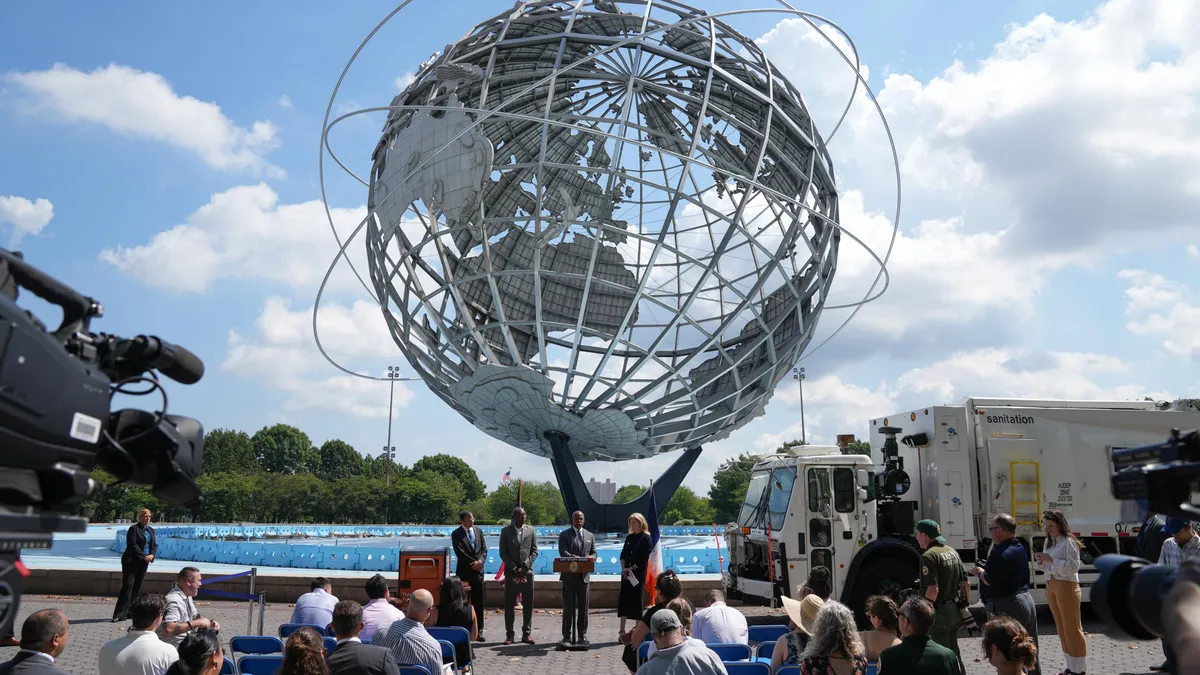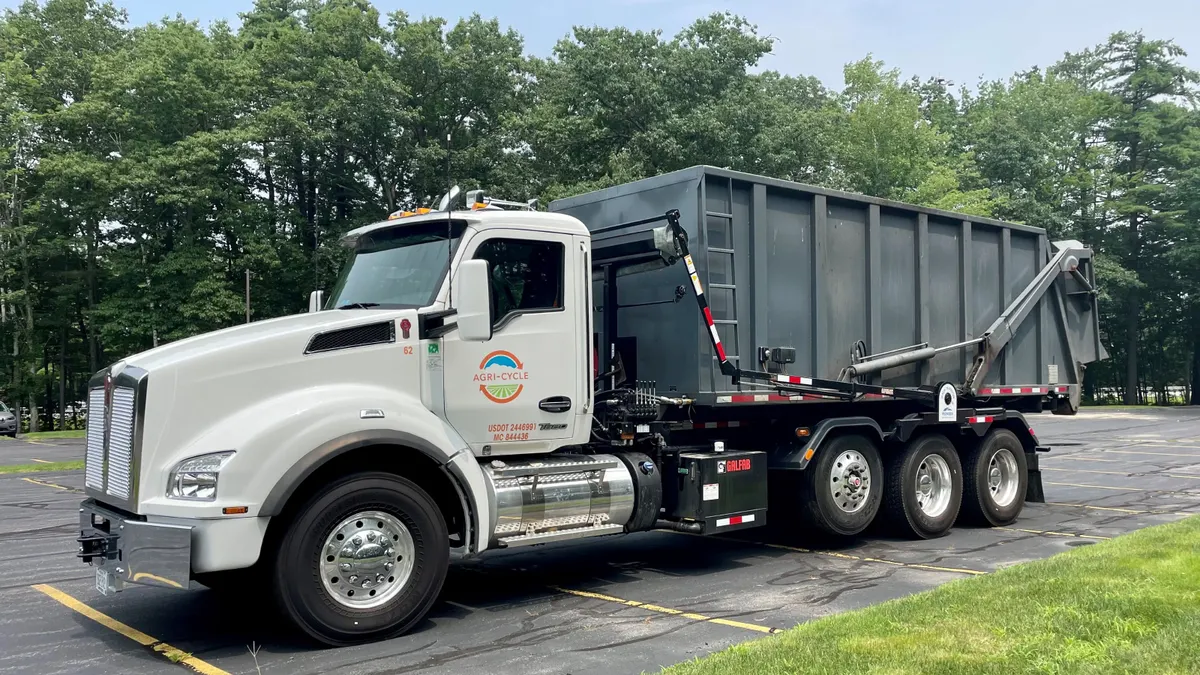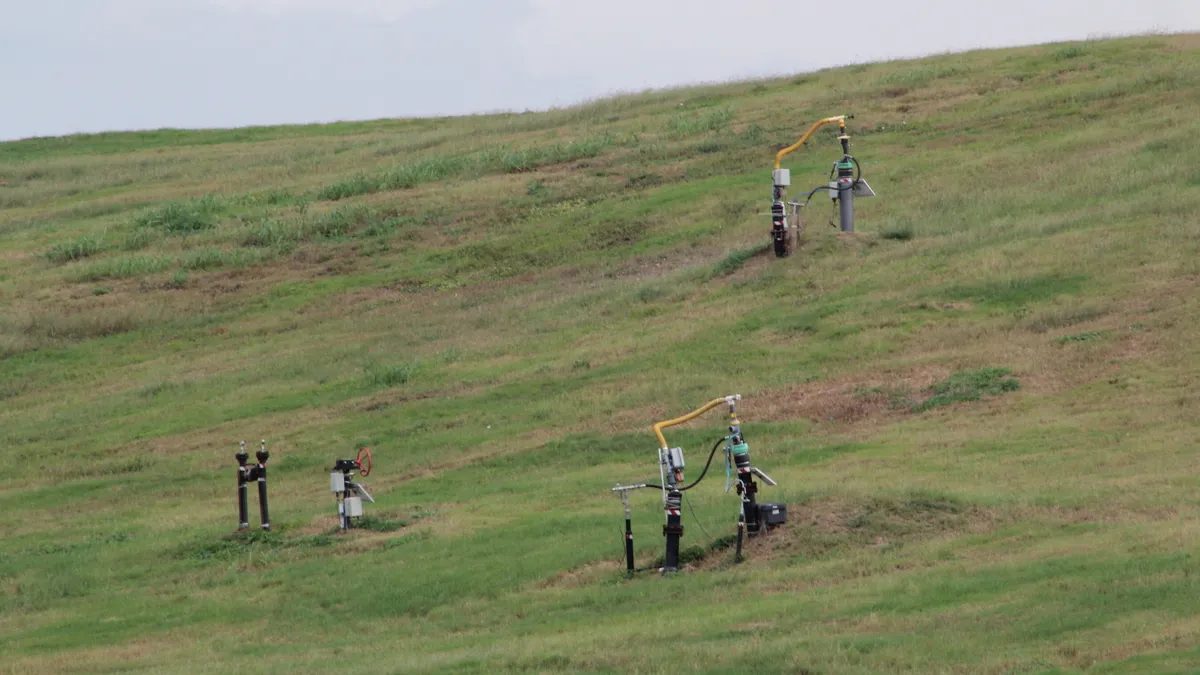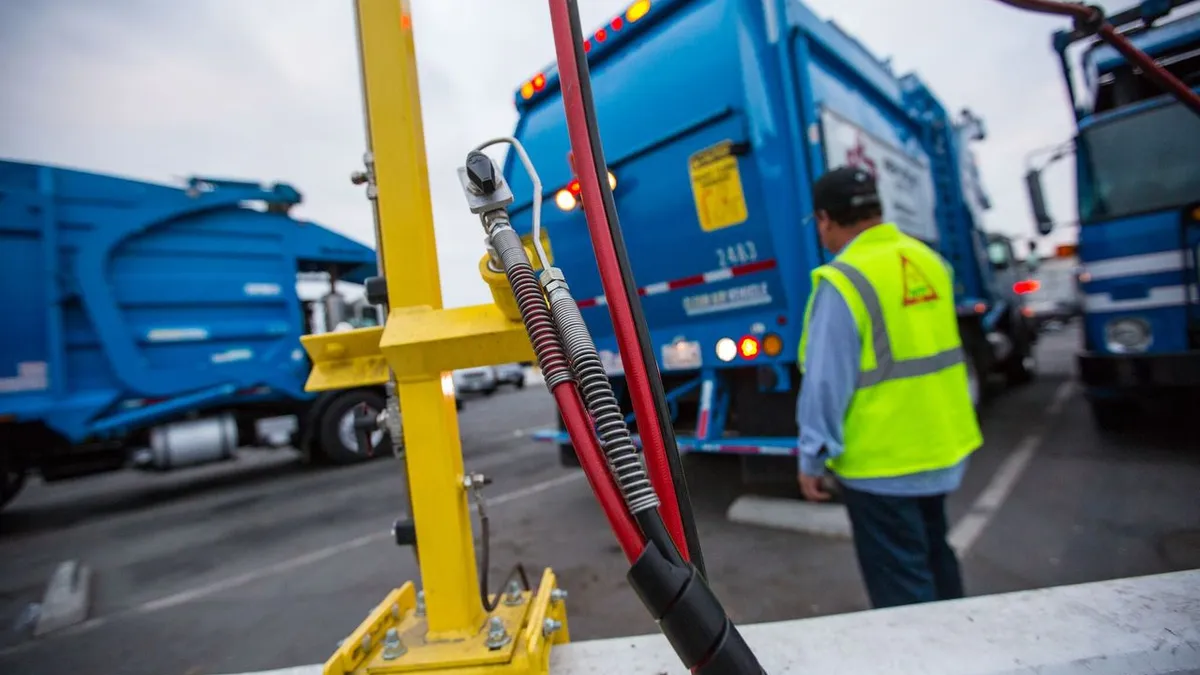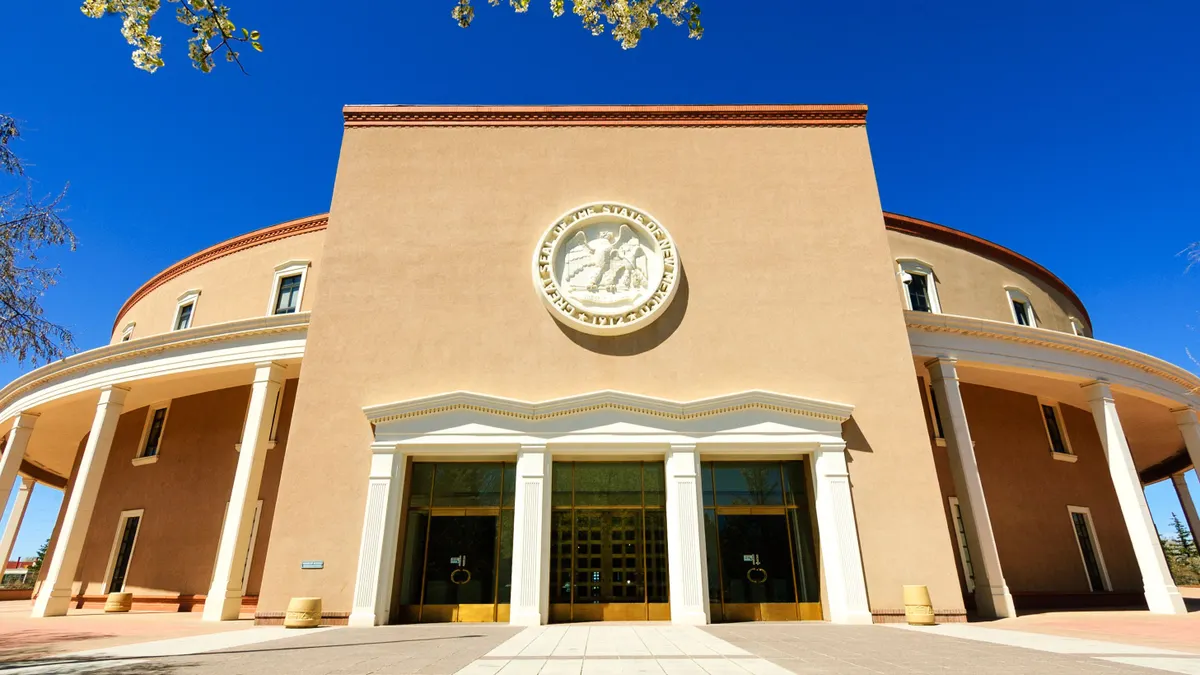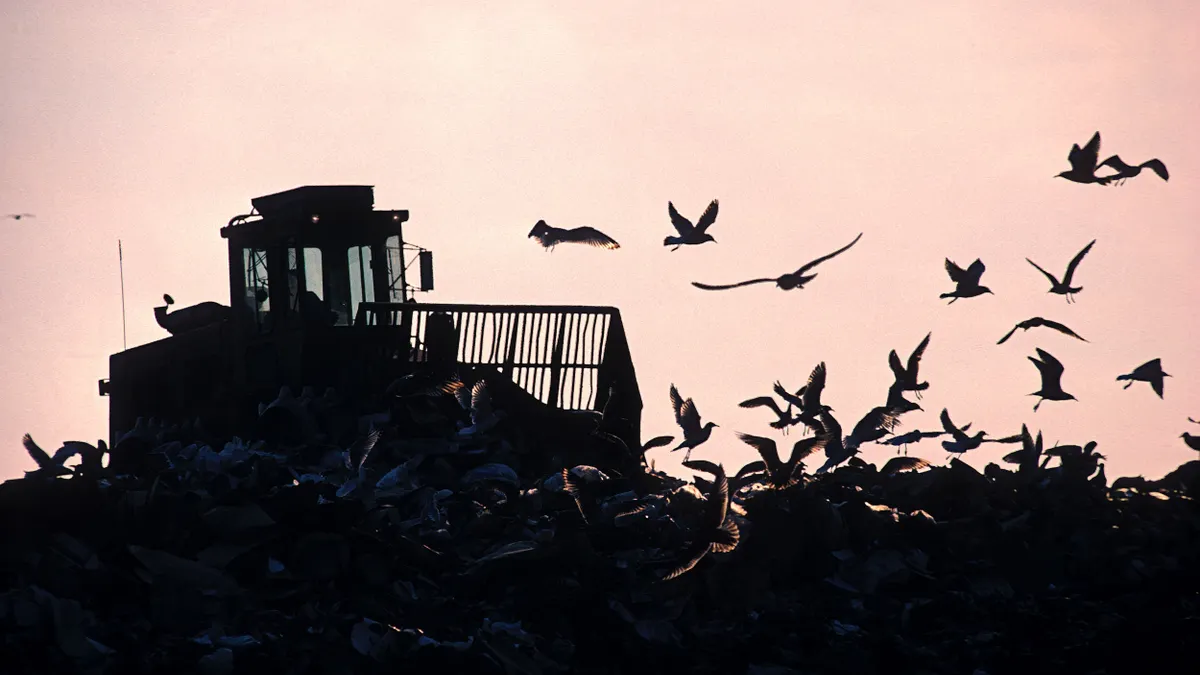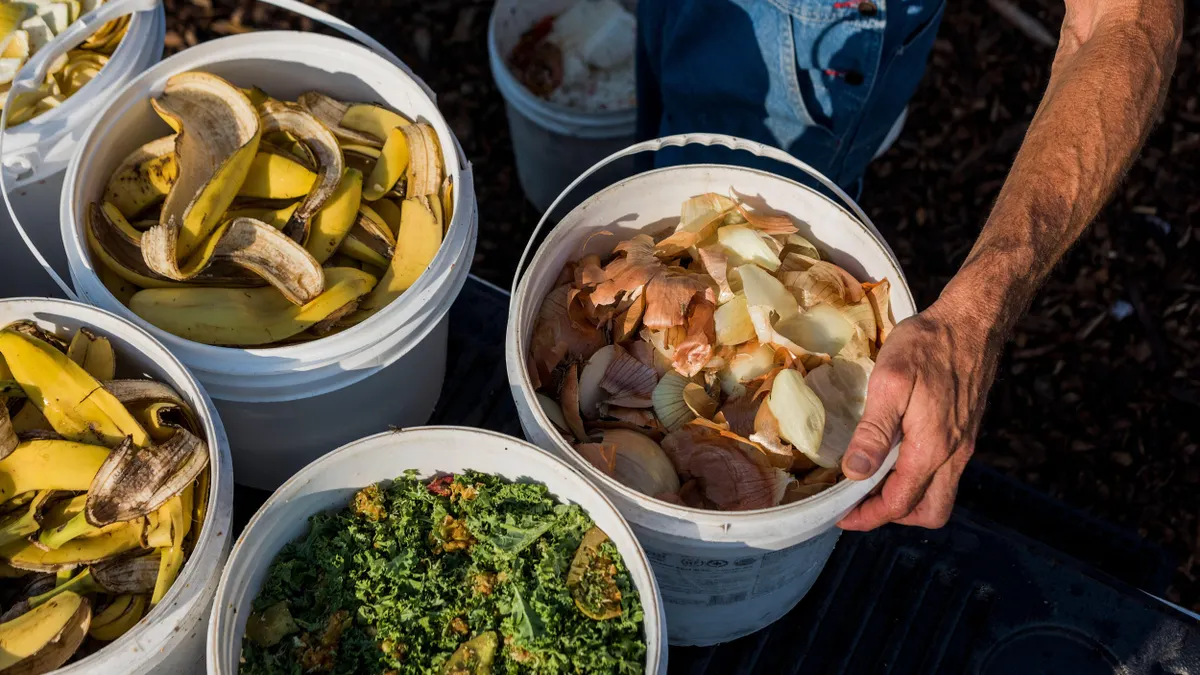After years of fits and starts, citywide curbside organics collection could become a reality in New York. Legislative and financial considerations still need to be resolved, but city officials are touting the early results from a new program in the borough of Queens as a positive development.
New York’s Department of Sanitation reported collecting 2,850 tons of organic material during the first six weeks of universal food and yard waste collection for residents in the city’s second-most-populous borough. According to DSNY, more than half of the waste districts in Queens outperformed the top district (part of Brooklyn) in organics volumes collected via an existing opt-in program. The opt-in program, which is the post-pandemic successor to a similar program paused by budget cuts, covers a smaller group of residents in select areas of other boroughs.
The city attributes the incremental growth in Queens residents’ participation to the program’s accessibility. While the city offers organics bins — and more than 35,000 have been requested — residents can use any type of bag or container they want.
"Past curbside composting programs were really positioned as if New Yorkers were doing us a favor by setting material out,” said Joshua Goodman, DSNY’s assistant commissioner for public affairs. "You’re not doing us a service, we're doing you a service.”
Another factor may be seasonal. Certain areas of Queens have a higher proportion of homes with yards, which generate more leaf and yard waste. Queens Community District 12, the program’s top performer, is one such area. While New York once had a more robust yard waste program, collecting upward of 18,000 tons per year in the early 2000s, the city currently only offers limited options.
Goodman said anecdotal reports show yard waste is likely a large share of the material collected so far. He said that was by design after surveying organics collection programs in other cities, but he believes this is not the only factor behind notable volumes. "It's autumn everywhere, and yet we're seeing skewed results.”
Detailed participation and contamination rate data is not yet available, but Goodman said material quality is at acceptable levels.
Organics collected from Queens are primarily going to two locations with existing city contracts. WM’s Varick transfer station in Brooklyn sorts out larger woody debris, which is sent for composting at a Nature’s Choice site in New Jersey. The rest goes through WM’s pre-processing system to create a slurry for codigestion at the city’s Newtown Creek wastewater treatment facility in Brooklyn. Other material goes to an American Recycling facility in Queens, where it is processed to remove contamination and sent to the Pine Island Farm anaerobic digester in Massachusetts.
The Queens program was first announced in early August and service started on Oct. 3. It will pause in late December and resume in March. This compressed timeline, ahead of a multi-month pause, has prompted questions about how to best get residents engaged.
Adam Mitchell, a member of the Queens Solid Waste Advisory Board speaking in his capacity as a local resident, applauded DSNY for “doing a door-knocking campaign, essentially” in some areas. Though he said efforts are not yet at the level of when New York rolled out curbside recycling in the early 1990s, a time when residents helped spread the word as designated block captains.
Mitchell estimated around 20% of neighbors on his Queens street had been setting out city-provided bins, with many others using plastic bags for their leaves. He said participation in areas such as Community District 12 stood out in particular. He noted that community engagement, along with efforts such as a bin drop-off program led by the Queens borough president and workshops on composting by the Eastern Queens Alliance, helped boost numbers in that area. "They've been doing a great job.”
City Council Member Sandy Nurse, who chairs the body’s sanitation committee, sees a need to build on this initial approach to engagement. She said a longer ramp-up period could have allowed for more coordinated outreach with community groups and elected officials. Nurse said the upcoming pause could discourage participation, but she still views the program as a key milestone.
"I think we are moving in the right direction, and I think the fact that the program is right now covering an entire borough is really important.”
Nurse and 41 other council members (out of 51) have signed on to legislation that would launch curbside organics collection for residential buildings citywide. A vote isn’t anticipated until next year because an environmental review is required by state law. DSNY started that review in October.
Eric Goldstein, a senior attorney and New York City environment director with the Natural Resources Defense Council, supports the review but hopes it’s quick.
"Every independent agency that has looked at this issue has concluded that the environmental benefits of a curbside composting program, both for climate and for local ecological benefits, far outweigh whatever adverse impacts there would be,” he said. "The city should be expediting this review so that this legislation could be signed by the mayor in time for Earth Day.”
Costs will be another consideration, as Mayor Eric Adams is looking for budget cuts across agencies.
Goodman said DSNY is not concerned about the Queens program being affected. NRDC’s Goldstein said the budget additions wouldn’t have to come immediately, as the program could be phased in over a more extended period of time, like when a 1989 law kicked off curbside recycling. Nurse was also optimistic about how this could play out.
“We want to get the city on track to achieve zero waste goals, and it's long overdue,” she said. “We need to make this a baselined program, and codifying that makes it law and makes it something that has to be run every year.”
During a Nov. 16 council hearing, DSNY Commissioner Jessica Tisch estimated it could cost upward of $75 million to procure enough trucks for citywide organics service. This would include an estimated 112 dual-bin trucks (on top of an existing 110 being used in Queens) for lower-density areas of Brooklyn, the Bronx and Staten Island. Another 50-plus rear-loaders would be needed for higher-density areas. The city estimates it would take at least eight months for truck delivery.
These capital costs, along with labor and processing expenses, would need to be factored into any broader plan.
Goodman said the Queens program has proven cheaper than the opt-in program. Assigning new DSNY hires to the routes has reduced overtime costs. Another change has been using dual-bin trucks (commonly seen in the city’s dual-stream recycling program) to collect 60% refuse and 40% organics. This allowed some areas to be rerouted, he said, so “by basically doubling up those routes, we've been able to run the program much cheaper." Savings have also come from cutting special yard waste collection days for Queens.
A citywide residential organics collection program could also lead to broader savings by reducing disposal export costs, though the city’s Independent Budget Office found any such shift “would be long-term and likely span multiple mayors and City Councils.” The report’s figures predate the Queens program, but its broader takeaways remain relevant. The IBO said the only way to dramatically reduce New York’s disposal volumes will be to focus on organics, which is the largest portion of its waste stream, but widespread participation (including a possible mandate) will be needed for those savings to occur.
New York has previously considered a “save-as-you-throw” program that could charge or incentivize residents based on their waste volumes, but the idea has been politically sensitive. Nurse said that after the rollout of citywide organics and an upcoming commercial waste zone system she plans to focus on save-as-you-throw.



